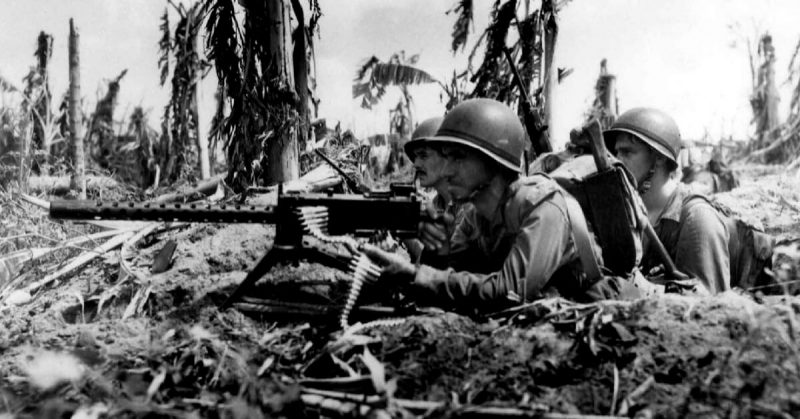In the second half of the 19th century, industrialized nations entered an arms race to produce the best machine-gun. This new type of weapon was devastating on the battlefield, and everyone wanted to field the best design, preferably one they controlled.
These early machine-guns were the result.
Williams Gun
One of the first machine-guns, the Williams Gun saw service in the American Civil War. A hand-operated automatic weapon, it could fire 65 rounds a minute. The paper cartridge rounds weighed 450g and had a caliber of nearly 40mm. One man fed them in while another turned the crank on the sliding breech-block. The gun was so heavy it had to be transported on an artillery carriage.
Gatling Gun
The more famous Gatling Gun also featured in the American Civil War. It was much lighter and more mobile than the Williams, although still a hefty device. Its early forms used six barrels rotating around a central point, with a hand-cranked mechanism operating the loading, cocking, firing, and then removal of the bullets’ casings. It was used to defend important points in battle. Following the Civil War, it continued to develop into new and improved versions.
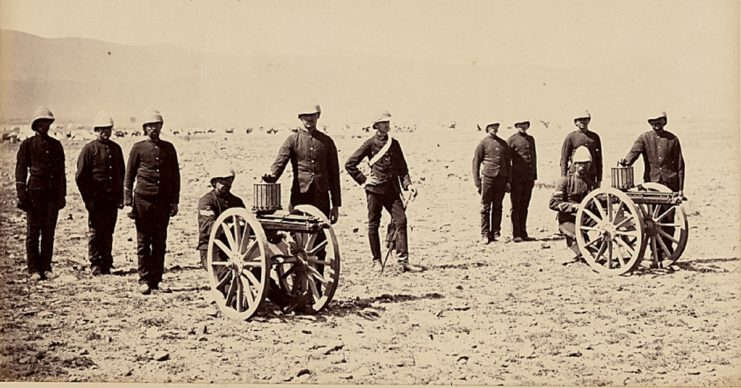
Mitrailleuse
The first French machine-gun, the Mitrailleuse also used multiple barrels – at first 37, later 25. With a well-trained crew, it could fire 300 rounds in a minute.
However, the Mitrailleuse proved disappointing when fielded during the Franco-Prussian war. Its bulk meant it had to be deployed almost like an artillery piece. Prussian light artillery had a much better range, allowing them to pick off the Mitrailleuse easily.
Hotchkiss Guns
The Hotchkiss arms manufacturing company was founded by Benjamin Hotchkiss, an innovator who died in 1885. In 1893, the company bought the rights to a gas-powered machine gun designed by the Austrian Baron Adolf von Odkoek. It was a flawed design, but one which featured useful innovations. Building on it, the company created the first in a series of Hotchkiss machine-guns which became an important part of the French arsenal. With its locked breech, gas-powered mechanism, and unique loading system, the Hotchkiss was a huge leap forward from the Mitrailleuse.
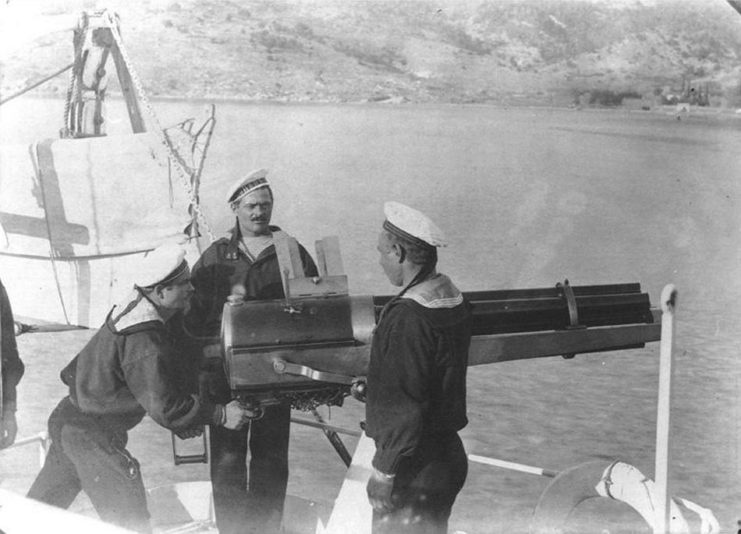
Maxim Gun
The inventor Hiram Maxim made his name in the US before moving to the UK. Due to his experience in gun design and the skill of his manufacturing machine operators, his first machine-gun worked perfectly when first tested in 1884. The weapon’s own recoil was used to power the loading and firing mechanism. In the Matabele War of 1893-4, fifty British soldiers fought 5,000 Matabele with the use of four well-placed Maxims, leaving 3,000 dead. Its downside was its weight, which came in part from a water-cooled mechanism.
Spandau
The Germans were slow to adopt machine-guns. When they did, they chose the reliable Maxim, which they adapted to suit their needs, including the 7.92mm caliber ammunition that was their standard. The result was the MG08, better known as the Spandau after the state arsenal where it was produced.
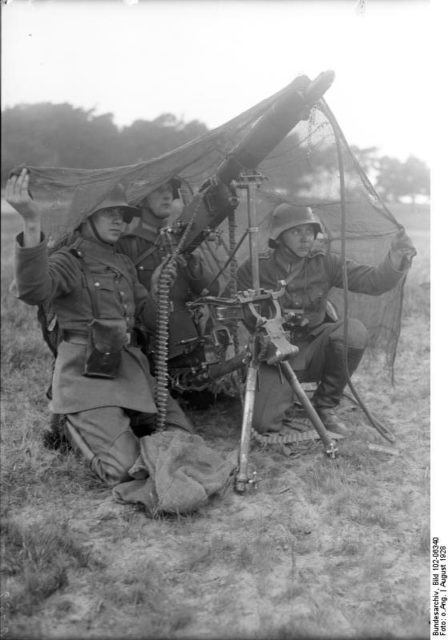
Bergmann
The next German machine-gun was the Bergmann, developed in 1902. It adopted the short recoil system and water cooled features of the Maxim but had added innovations. The metal link ammunition belt and special feed system made it much less vulnerable to ammo jams than cloth-belt machine-guns: it could even correct badly aligned rounds. The barrel could be quickly changed without losing water from the cooling system. This was a huge advantage given the tendency of barrels to become overheated and worn in action.
German soldiers continued to prefer the familiar and proven Spandau, but the Bergmann was in many ways a superior machine.
Dreyse
Although named after Johann Dreyse, this gun was created by Louis Schmeisser in 1907. It had a metal feed system like the Bergmann, and like that gun was a German creation.
The Dreyse never saw widespread use, but its inception was still significant. It placed the company Rheinische Metallwaren und Maschinenfabrik AG, later Rheinmetall, in the field of automatic weapons design. The company’s expertise in that area proved invaluable for the Germans during WWII.
Schwarzlose
Like the Germans, the Austro-Hungarians were very impressed with the Maxim. Unlike the Germans, they decided to cut corners in getting hold of it. Rather than pay for the rights to produce it under license, they created an inferior imitation, the 8mm Schwarzlose.
Using a delayed-blow-back mechanism, a style that would not become popular until the 1950s, the Schwarzlose came before such devices could easily be made to work. It had a lot of teething troubles which delayed its appearance in the Austro-Hungarian army. It was also heavy and used a fabric belt feed instead of the superior metal feed, but had the advantage of being relatively cheap to manufacture.
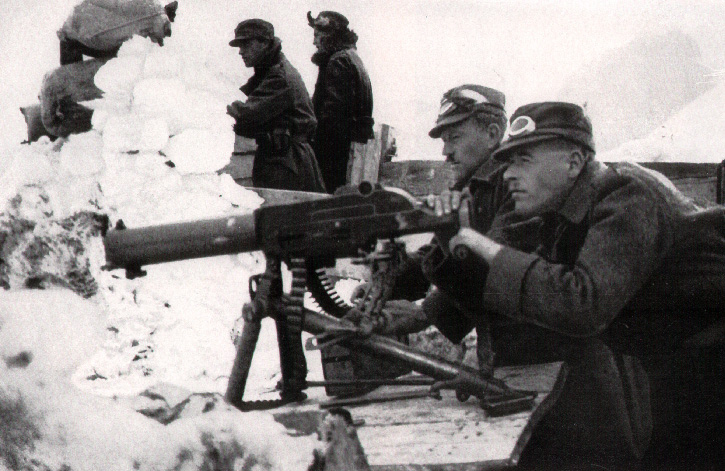
Madsen
The leading machine-gun to come out of Denmark, the Madsen was being developed from the 1880s and entered into use in 1902. It used a unique variation on the recoil loading design, in which the breechblock itself was an oscillating mass. This block dropped below the bore, stripped and chambered a round, then rose back into position. It made it the only machine-gun not using a ramming action.
The Madsen suffered from claims that it was unsafe to use. It proved far from true, and it remained in use long after many of its competitors became obsolete.
Perino
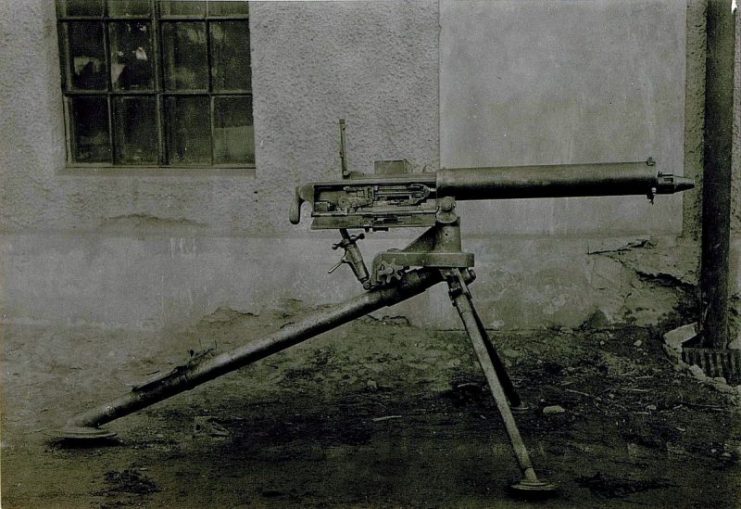
Developed in Italy in 1901, the Perino had some innovative features, including a unique feed system. It had a box on the left of the receiver holding trays filled with 25 rounds each which ensured the bullets were well-aligned for loading; reducing jams. If a jam did occur, it could be cleared by pushing a button to get rid of the stuck round.
The Italians decided to keep their impressive weapon a secret. They went so far as to buy scores of Maxims so no-one would guess they were secretly manufacturing their own gun.
Source:
Christopher Chant (1986), The New Encyclopedia of Handguns
